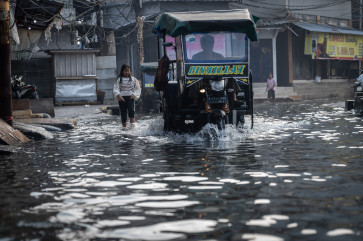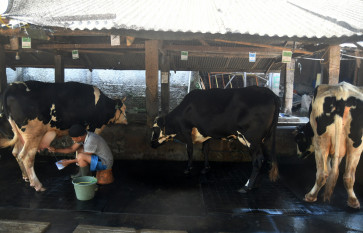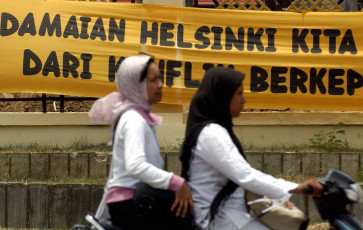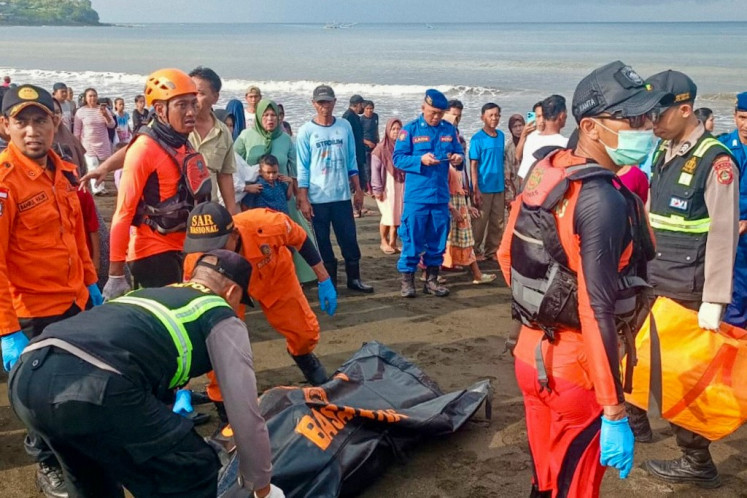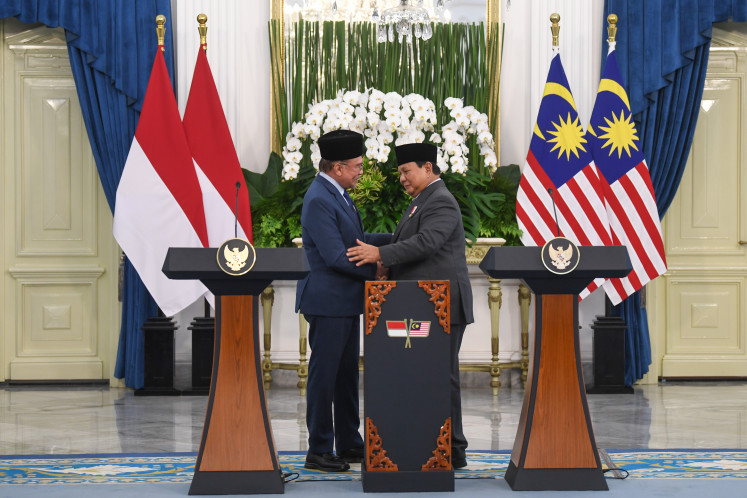Popular Reads
Top Results
Can't find what you're looking for?
View all search resultsPopular Reads
Top Results
Can't find what you're looking for?
View all search resultsWorld currency collection on display in Monetary Museum
Money matters: A visitor examines foreign banknotes through a magnifying glass at the Monetary Museum in Purbalingga, Central Jakarta
Change text size
Gift Premium Articles
to Anyone
M
span class="caption" style="width: 398px;">Money matters: A visitor examines foreign banknotes through a magnifying glass at the Monetary Museum in Purbalingga, Central Jakarta. The museum has a collection of currencies from 183 countries. JP/Agus Maryono
Using a magnifying glass, Robby Sofwan, 33, studiously examined the various types of currency in the locked glass cabinet.
The resident from Purwokerto, Banyumas regency, Central Java, was one of a group of visitors to the Monetary Museum in Purbalingga. Like Robby, they seemed to enjoy themselves looking at the hundreds of foreign currencies in the display cabinets.
Inaugurated by Purbalingga Regent Triyono Budi Sasongko six months ago, the museum broke the country, or even the world, record as the museum with the largest collection of foreign currencies. The award was presented by Paulus Pangka from the Indonesian Records Museum (MURI).
“Most of the foreign currencies are small. So you need a magnifying glass to see them clearly,” Robby told The Jakarta Post recently, presenting one display box after another.
The Monetary Museum has a complete collection of both coins and bank notes from 183 countries.
They are all arrayed neatly in order in the museum, which itself boasts a charming interior design.
Each display box has several magnifying glasses for visitors to use.
Robby said it was the first time he had seen so many currencies. “Yes, for me it is an education, it increases my knowledge. But what’s more important is that the museum must be quite a valuable resource for researchers and money collectors. Because each currency usually has something to do with a country’s history,” he said.
This museum is located in the same complex as three other museums in Kutasari village, Kutasari district, only about 4 kilometers north of the heart of the capital of Purbalingga regency. The other museums are the Reptile Museum, the Wayang (Puppet) and Archeology Museum and the Museum of Science and Technology. The three museums, along with a nearby reptile park, were inaugurated at the end of 2009.
Prayitno, a spokesman for the Purbalingga administration, said the Monetary Museum was built on an idea from the regent, who will retire soon. “His term will end in April. He had a huge collection of foreign currencies, so the museum was constructed so that the public could enjoy his collection too,” he told the Post.
Prayitno said that Regent Triyono had collected the international currencies when he traveled to other countries. “He said every time he left the country, he would change some money and bring it home for his collection. He did it a long time ago, when he was an employee at the Home Ministry.”
Triyono acknowledged that the money at the museum was his private collection. He started to collect foreign currencies more than 15 years ago. The regent, who is currently in the post for his second term, hoped that after his term ended, the currency collection could become his memorial and an educational resource for people, especially Purbalingga residents.
“I can say that the museum has the largest collection in Indonesia, and maybe in the world. That’s why it has received an award from the Records Museum [MURI] as the museum with the largest currency collection,” Triyono said recently.
He said whenever he traveled overseas he would buy foreign currency at the airport before he left for home. “I always bought foreign currency. I bought it with my own money. I enjoy collecting currency from various countries, including old coins. As my collection grew, I didn’t know where to keep it all, so I make the best of it by building a monetary museum,” Triyono said.
He hoped the existence of the museum would improve the tourism potential in Purbalingga.
“Before the museum was built, the number of tourists in 2008 and 2009 had reached more than 1 million in a year. Hopefully, there will be more tourist arrivals in the future,” Triyono said.
The main tourist attraction in Purbalingga is the Owabong water park. In 2008, Owabong attracted 1.2 million tourists, contributing Rp 18 billion (US$1.99 million) to the regional revenue. Owabong, which was developed five years ago, is the most complete water park in Central Java and takes advantage of a natural spring.
“Before President SBY [Susilo Bambang Yudhoyono] launched the 2010 Visit Museum year, we had already made a start. We were lucky because when it was launched, we were ready,” said Agus Dwiyantoro, the marketing manager for the museums and Owabong.
“It has become a challenge for us to maximize the tourist numbers visiting the museum in accordance with the President’s program,” he said.
With a Rp 10,000 (about US$1) entrance ticket, one can visit all of the museums and the reptile park.
Agus said the Wayang Museum has various kinds of wayang from all over the country. “In addition, we provide facilities for visitors, and the media, so they can feel what it is like to play with the leather puppets. Please do so, so you can not only watch but play with them,” he said.
The Museum of Science and Technology has a number of hands-on exhibits and demonstrations tools related to science and technology, which can be used by the visitors. “For example, what causes a whirlwind? Or, how does a volcano erupt? The museum is open not just for students but for the general public,” Agus said.
As for the Owabong water park, it is located on 7.8 hectares land and has 11 large pools and 10 types of water-based facilities.
“The number of visitors in 2009 decreased slightly from 2008 because, we have to admit, there are now so many competitors. In Central Java alone, there are 15 similar water parks which have been built or which are still being developed,” Agus said.
“However, with the museums too, we hope more tourists will come,” he said.


